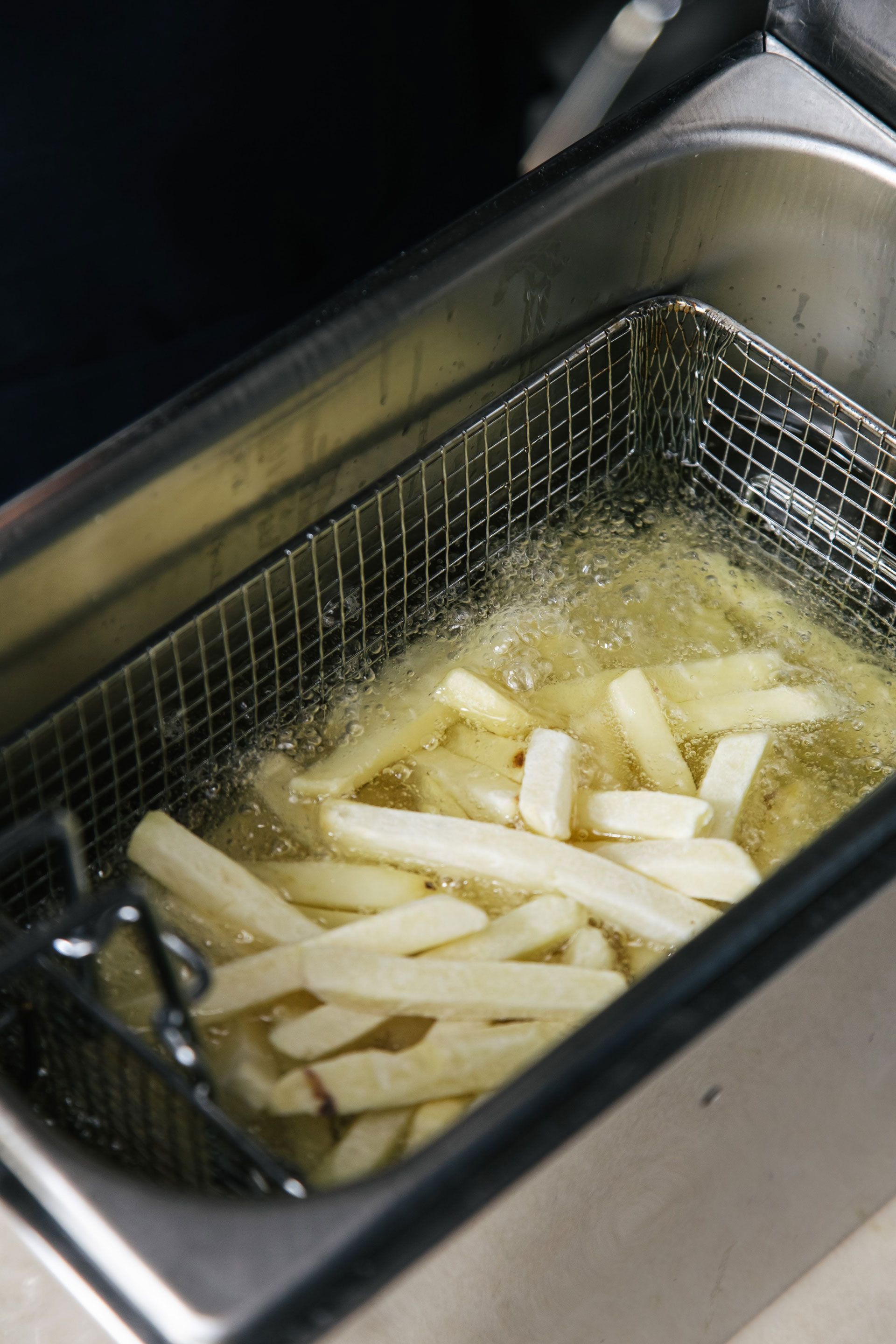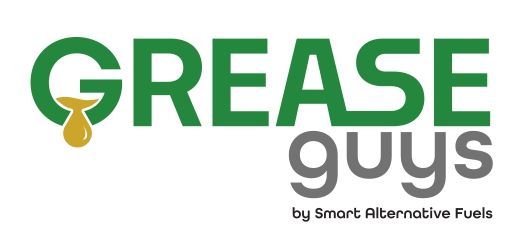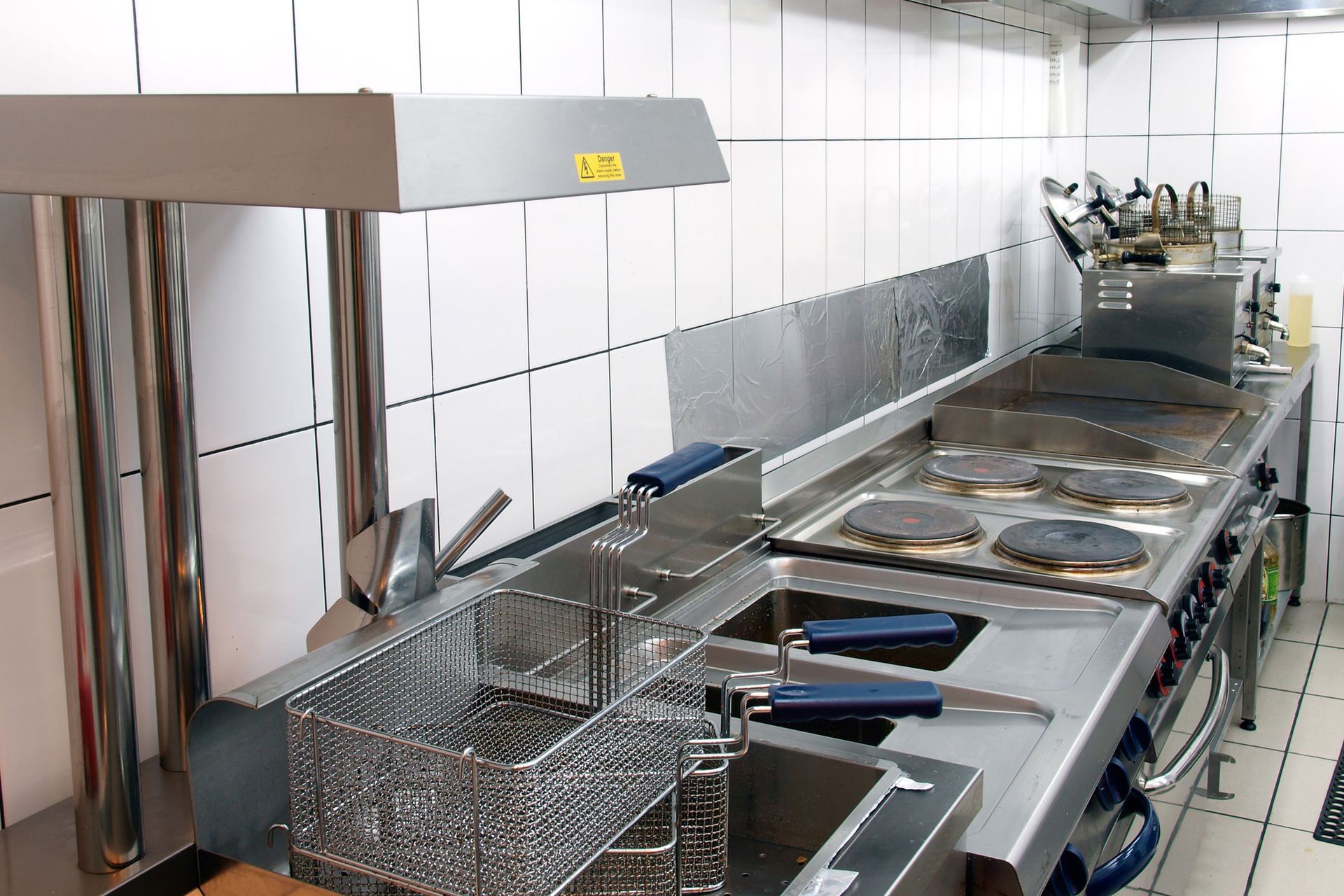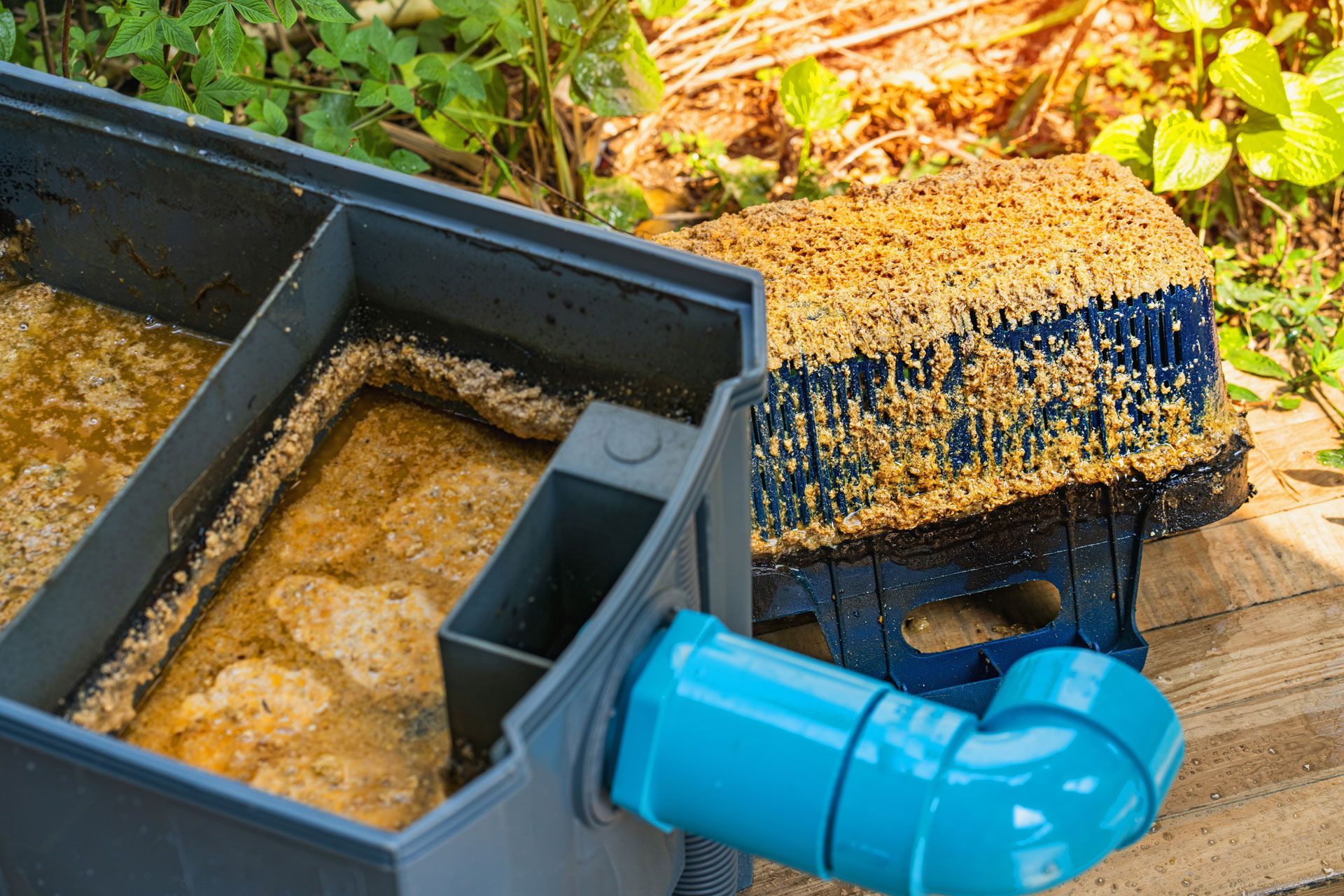Call Us Today!
Understanding Grease Trap Cleaning: Skimming, Pumping, and Enzymatic Treatment

Every commercial kitchen relies on a grease trap to prevent oils and greases from clogging the wastewater system. A clogged system can disrupt your kitchen's operations and incur hefty repair costs.
In this guide, we'll explore three main methods for cleaning grease traps: skimming, pumping, and enzymatic treatment. Understanding these methods will help you choose the best cleaning strategy for your kitchen’s needs.
Skimming
What is Skimming?
Skimming is a straightforward method of grease trap cleaning where the top layer of oils and fats is manually removed. This method targets the lighter grease that floats above the water.
How Does Skimming Work?
A scoop or similar tool is used to carefully remove the upper layer of grease from the trap. This is typically done as part of regular kitchen cleaning routines and is especially effective for smaller or less busy kitchens.
When to Use Skimming
Skimming is best suited for environments where grease accumulates slowly. It's ideal for establishments that don't heavily rely on deep-fried foods or have smaller volumes of kitchen waste.
Advantages of Skimming
- Cost-effective: Requires minimal equipment and can be performed by kitchen staff.
- Immediate Impact: Quickly reduces the amount of visible grease, improving the efficiency of the grease trap.
Limitations of Skimming
- Surface Level: Only removes the top layer of grease, not the solids and heavier deposits that settle at the bottom.
- Frequent Need: Because it's a surface-level solution, it needs to be done more frequently to maintain effectiveness.
Pumping
What is Pumping?
Pumping is a thorough cleaning method that involves removing all the contents of a grease trap using a vacuum truck or pump. This method not only removes grease but also water and solid deposits that have settled at the bottom.
How Does Pumping Work?
A professional service typically performs pumping. They use specialized equipment to suction out all the layers inside the grease trap, including the greases, oils, fats, water, and solid sludge. This ensures a comprehensive cleaning.
When to Use Pumping
Pumping is recommended for high-volume kitchens such as those in large restaurants or hotels, where grease builds up quickly. It’s also crucial before the trap reaches 25% capacity to prevent clogging and overflow.
Advantages of Pumping
- Deep Cleaning: Effectively clears out all components of grease buildup, not just the top layer.
- Less Frequent: Due to its thoroughness, pumping is required less often than skimming, usually every 1-3 months depending on usage.
Limitations of Pumping
- Cost: More expensive than skimming because it requires professional service and specialized equipment.
- Disruption: The process can be more disruptive to kitchen operations, requiring shutdown of the area during cleaning.
Enzymatic Treatment
What is Enzymatic Treatment?
Enzymatic treatment involves using biological enzymes to break down fats, oils, and greases in a grease trap. These enzymes accelerate the natural decomposition process, making it easier to manage grease buildup.
How Does Enzymatic Treatment Work?
This method utilizes a mix of bacteria and enzymes that are added directly to the grease trap. These biological agents digest the grease, turning it into substances that are less harmful and easier to flush through the wastewater system.
When to Use Enzymatic Treatment
Enzymatic treatment is suitable for kitchens with moderate grease levels and can be used as a regular maintenance technique to keep grease traps running smoothly. It’s particularly effective in maintaining flow and preventing blockages between more intensive cleaning sessions.
Advantages of Enzymatic Treatment
- Sustainable: Enzymes are biodegradable and eco-friendly, posing no harm to the environment.
- Continuous Action: Continues to work over time, reducing the frequency of mechanical cleanings.
- Odor Reduction: Helps control odors by breaking down odor-causing compounds.
Limitations of Enzymatic Treatment
- Initial Effectiveness: It may take some time to see significant results as the enzymes need to establish themselves.
- Supplementary Method: Often used in conjunction with other cleaning methods, as it does not remove the physical buildup of solids.
Choosing the Right Method
Choosing the right grease trap cleaning method depends on several factors, including the size of your kitchen, the volume of grease your operations produce, and your maintenance goals. Here’s a comparative look at skimming, pumping, and enzymatic treatment to help you make an informed decision.
Comparative Analysis
- Cost: Skimming is the most cost-effective but requires frequent action. Pumping involves higher upfront costs but less frequent service. Enzymatic treatment has moderate costs but may require regular product purchases.
- Effectiveness: Pumping offers the most comprehensive cleaning, removing all layers of buildup. Skimming is effective for lighter, surface-level grease. Enzymatic treatment works continuously at a molecular level but doesn't remove physical debris.
- Environmental Impact: Enzymatic treatment is the most environmentally friendly, using natural processes to break down grease. Skimming and pumping have varying impacts based on the disposal methods used for the removed grease.
- Maintenance Needs: Skimming needs to be performed often, sometimes weekly, depending on kitchen usage. Pumping can be scheduled less frequently, typically every few months. Enzymatic treatments require ongoing dosing but generally require less intensive labor.
Expert Recommendations
Industry experts generally recommend a combination of methods for optimal results. For instance, regular enzymatic treatment can reduce the frequency of needed pumping sessions, while skimming can be an effective daily management practice in low-volume kitchens.
Maintenance and Compliance
Routine Maintenance Tips
Keeping your grease trap in optimal condition requires regular attention beyond the main cleaning methods. Here are some essential maintenance tips:
- Monitor Grease Levels: Regularly check the levels of grease accumulation to determine the best cleaning schedule.
- Keep Records: Maintain detailed records of cleanings and maintenance for compliance and operational continuity.
- Preventative Measures: Implement kitchen best practices such as wiping down greasy pots and pans before washing and using strainers in sinks to minimize grease entering the trap.
Legal and Environmental Compliance
Compliance with local regulations is critical when managing grease traps. Failing to properly maintain your grease trap can lead to:
- Fines and Penalties: Non-compliance can result in hefty fines from local water authorities.
- Environmental Harm: Improperly maintained grease traps can lead to sewer blockages and overflows, causing environmental damage.
- Health Risks: Overflowing grease traps can also pose health risks in the kitchen, affecting both staff and customers.
Common Problems and Solutions
Troubleshooting Guide
Even with regular maintenance, grease traps can encounter issues. Here’s how to address some common problems:
- Clogs: If clogs occur, check for blockages in the inlet or outlet pipes. Regular skimming and enzymatic treatments can prevent their recurrence.
- Odors: Bad smells can be mitigated by ensuring more frequent cleanings and using odor-control enzymatic treatments.
- Slow Drainage: Slow drainage often indicates a full trap or a blockage. Pumping may be necessary to restore proper flow.
Professional Help
While some issues can be resolved with routine maintenance, others might require professional intervention. Consider hiring a professional when:
- Major Blockages: Severe clogs that affect the entire kitchen’s plumbing need professional equipment and expertise.
- Regular Assessments: Professional assessments can help optimize your maintenance schedule based on your specific kitchen needs.
Conclusion
Regular maintenance of grease traps is essential not just for compliance, but for the smooth operation of your kitchen. By understanding and utilizing the appropriate cleaning methods—skimming, pumping, enzymatic treatment—you can keep your system running efficiently and avoid the common pitfalls that come with grease buildup. Remember, a well-maintained grease trap is key to a clean, safe, and efficient kitchen environment.
Looking for expert grease trap and oil collection services in Washington? Choose
Grease Guys for top-notch grease trap cleaning, pumping, and cooking oil collection. Trust us to keep your kitchen running smoothly and compliantly.
Contact Grease Guys today and ensure your establishment benefits from the best in the business!
Send us a Message
We will get back to you as soon as possible
Please try again later
OUR SERVICES
TIPS & ARTICLE
GET IN TOUCH
Phone: (855) 227-6060
Email: info@greaseguys.com
Address: 3188 Road M.2 NE, Moses Lake, WA 98837, United States of America
Business Hours:
- Mon - Sun
- Open 24 Hours
AREAS WE SERVE
© All Rights Reserved • LocalEyes | Terms of Use | Privacy Policy



